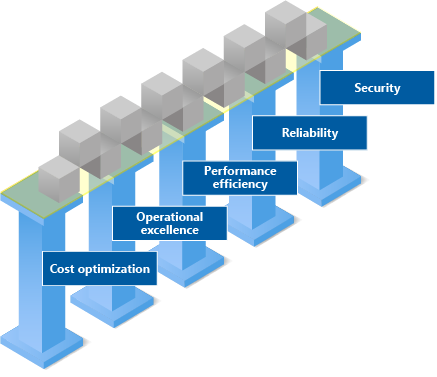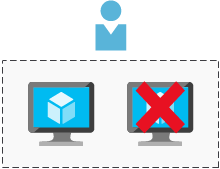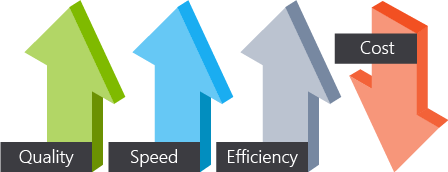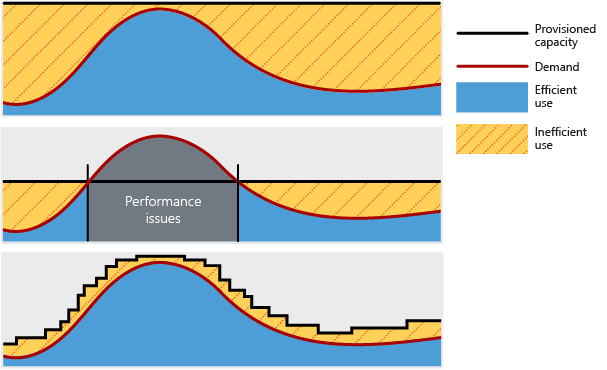Azure Well-Architected Framework pillars
- 10 minutes
The cloud has changed the way organizations solve their business challenges, and how applications and systems are designed. The role of a solution architect isn't limited to delivering business value through the functional requirements of the application. They must also ensure that the solution is designed in ways that are scalable, resilient, efficient, and secure.
Solution architecture is concerned with the planning, design, implementation, and ongoing improvement of a technology system. The architecture of a system must balance and align the business requirements with the technical capabilities that are needed to execute those requirements. The finished architecture is a balance of risk, cost, and capability throughout the system and its components.
Azure Well-Architected Framework
The Azure Well-Architected Framework is a set of guiding tenets to build high-quality solutions on Azure. There's no one-size-fits-all approach to designing an architecture, but there are some universal concepts that apply regardless of the architecture, technology, or cloud provider.
These concepts aren't all-inclusive, but focusing on them can help you build a reliable, secure, and flexible foundation for your application.
The Azure Well-Architected Framework consists of five pillars.

Reliability
Every architect's worst nightmare is having an architecture fail with no way to recover it. A well-architected cloud environment is designed to anticipate failure at all levels. This process involves creating a system that's resilient to failure and can self-heal. If an outage occurs, it should recover within the time that your stakeholders and customers expect.
The principles of the Reliability pillar can help achieve business goals. A reliable workload must continue to function even when things go wrong. It should be resilient enough to detect, manage, and quickly recover from failures. Additionally, it needs to be available so that users can access it when they need to, and at the quality that they expect.

Security
The Security pillar helps make your workloads resilient to security concerns. Security incidents can hurt your reputation, operations, and finances, so it's crucial that you add strong security measures. A secure workload is resilient to attacks. To see if your security measures are effective, ask yourself if your defenses are strong enough to stop attacks and limit damage. A key part of implementing security is building with a Zero Trust approach and following the CIA Triad: confidentiality, integrity, and availability.

Cost Optimization
When you set up your cloud environment, you might come across cost increases that you don't expect. Cost optimization is about making sure the money that your organization spends is put to good use. Architecture design is driven by business goals and must factor in return on investment (ROI) and financial constraints. The Cost Optimization pillar can help you figure out how to allocate your budget, define spending patterns and priority areas, and get the most out of your resources.

Operational Excellence
Unreliable workloads can increase downtime, increase costs, and decrease customer satisfaction. The Operational Excellence pillar helps keep everything on track to ensure high-quality performance. A workload that operates smoothly has DevOps practices and procedures implemented, such as development, observability, and release management procedures. Standardized workflows and team cohesion can help minimize process variance, human error, and customer disruption.
Performance Efficiency
It's important to make sure that your workload can handle changes in demand. When there's an increase in load, your workload needs to manage it without affecting user experience. And when the load decreases, it's important to conserve resources. It's vital that you monitor and manage the amount of capacity that your system has so that your applications run smoothly and efficiently. You need a solid strategy to keep performance targets on track over time.

Trade-offs between pillars
In an ideal architecture, you'd build the most secure, high-performance, highly available, and efficient environment possible. However, as with everything, there are tradeoffs.
To build an environment with the highest level of all these pillars, there's a cost. That cost might be in money, time to deliver, or operational agility. Every organization has different priorities that affect the design choices that are made in each pillar. As you design your architecture, you need to determine which trade-offs are acceptable and which aren't.
When you're building an Azure architecture, there are many considerations to keep in mind. You want your architecture to be secure, scalable, available, and recoverable. To make that possible, you have to make decisions based on cost, organizational priorities, and risk.